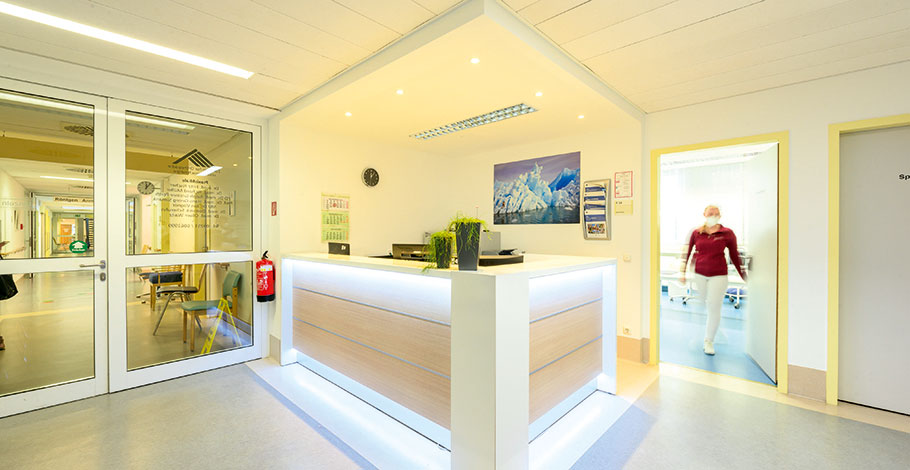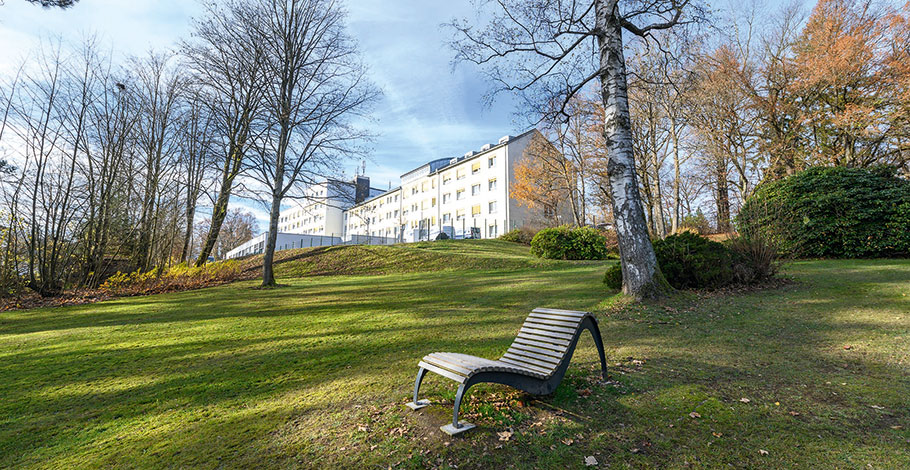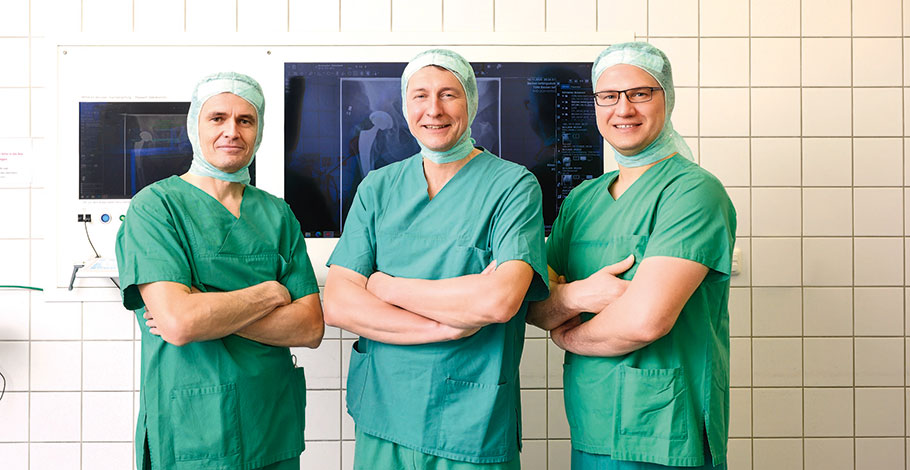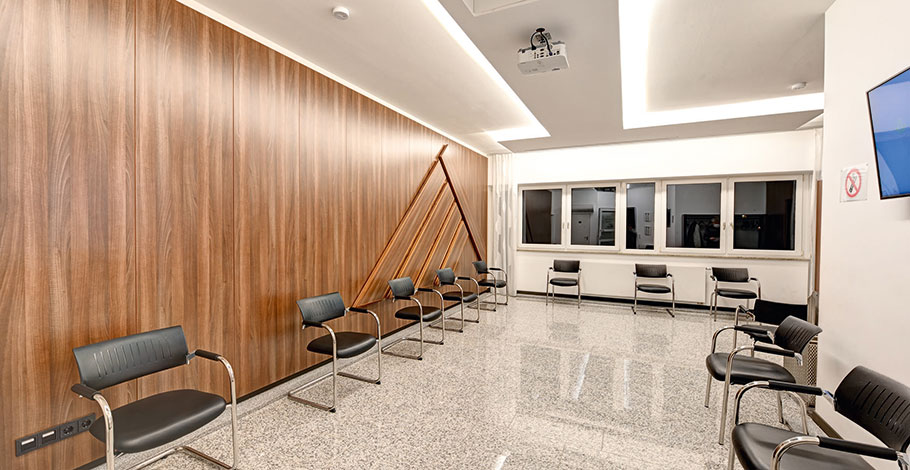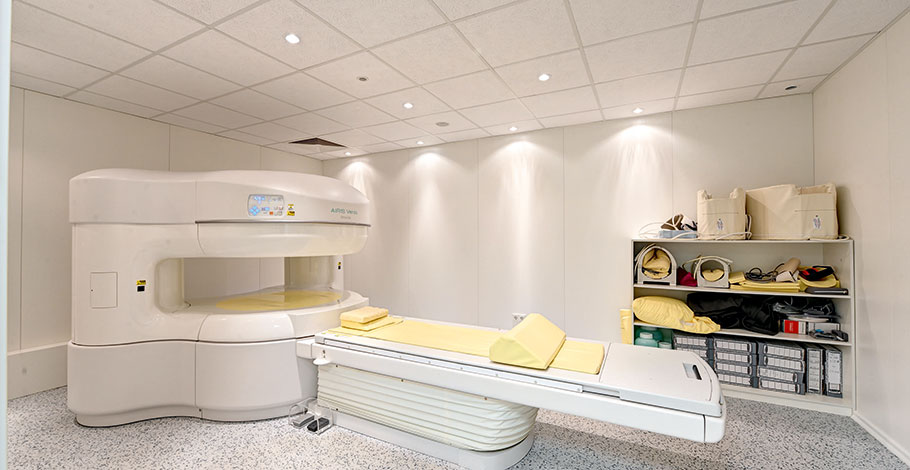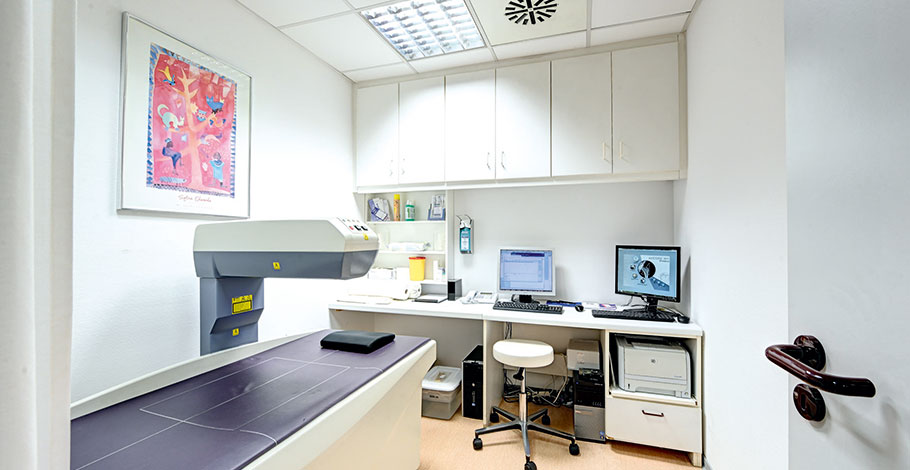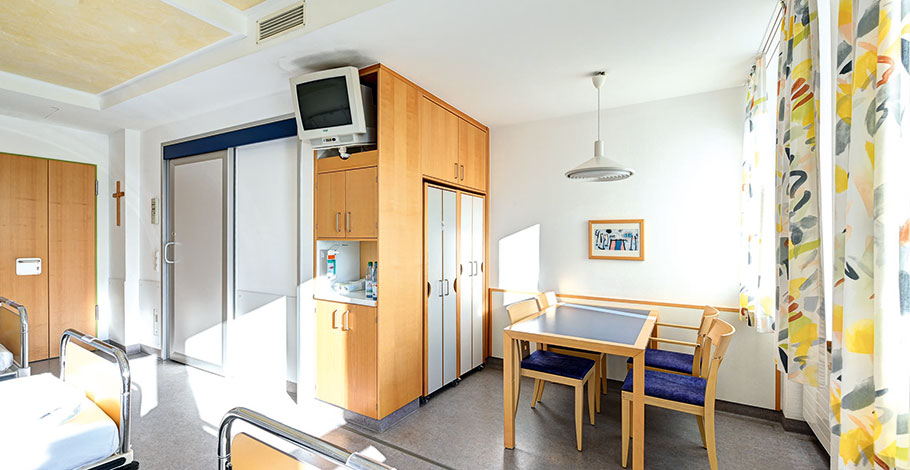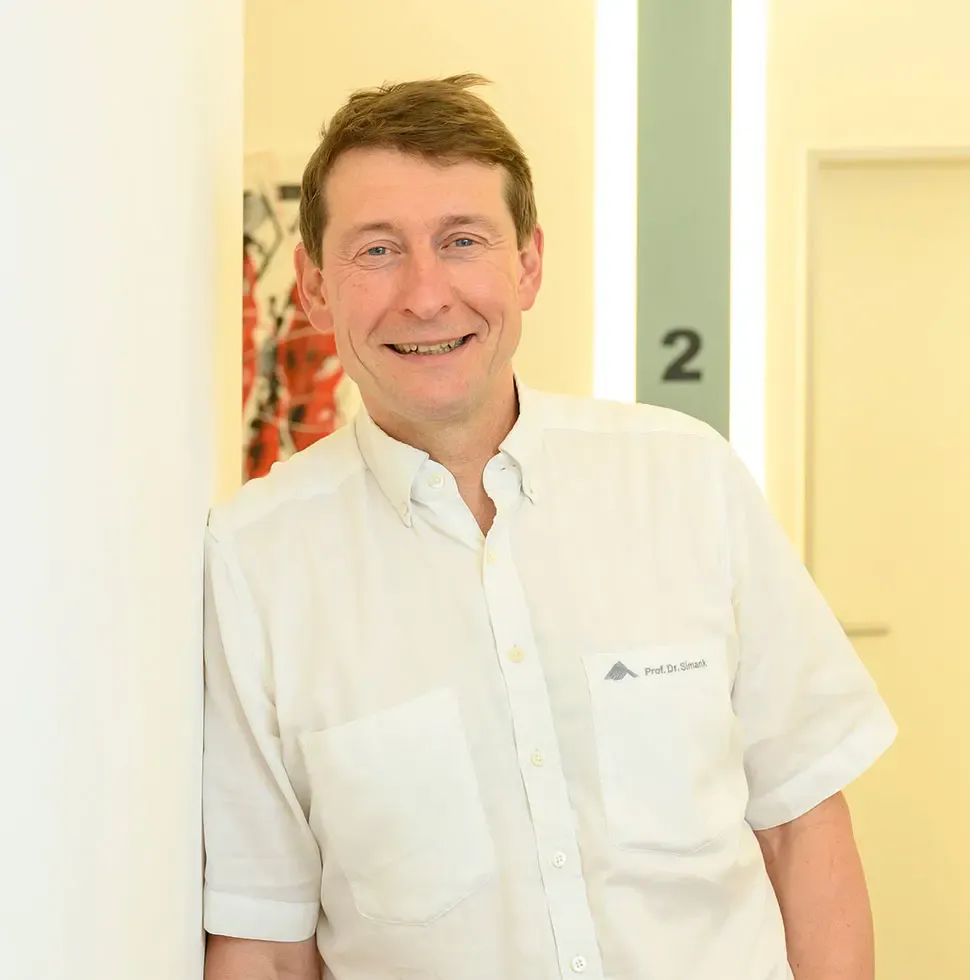
- Hof
- Innovative Orthopedics & Sports Orthopedics
Prof. Dr. Hans-Georg Simank
Zentrum für Orthopädie und Neurochirurgie
Services
Family care with top medical performance
When asked what makes the Department of Endoprosthetics at the Center for Orthopedics and Neurosurgery in Hof so special, Prof. Hans-Georg Simank has a clear answer: "We offer family care with top medical performance, which we tailor individually to each patient," says the endoprosthetic specialist.
In 2005, Simank, an experienced senior physician at the University Clinic Heidelberg, joined the Center for Orthopedics and Neurosurgery in Hof as a practice partner. At that time, around 200 joint replacements were performed annually. Over the past 15 years, Simank has expanded the department into an endoprosthetics center known beyond national borders. Currently, the team of doctors in Hof, in cooperation with the Bayreuth orthopedic group, provides over 1,000 patients per year with artificial joints. The high number of operations guarantees a high standard and the best care for patients. "It is now considered established that centers with high case numbers per surgeon achieve better results," says Simank.
The procedures are distributed among three main surgeons from the Hofer practice: Besides Simank, MU Dr. Jan Vagner, also a partner of the group practice, and senior physician Andreas Haas operate. The team holds consultations on fixed days in the practices in Hof and Münchberg. In addition, Simank works in the group practice Orthopedic Surgery Bayreuth (OCB). Operations are mainly carried out in the Münchberg Clinic. "There we have our own department with three wards, where we have room for up to 70 patients," says the specialist in orthopedics and trauma surgery.
"We offer a familial care while simultaneously providing top-tier medical performance, which we tailor individually to each patient."
Prof. Dr. Hans-Georg Simank
The operating wing and intensive care unit of the clinic are fully and state-of-the-art equipped with all technical aids for optimal patient care. Bright and friendly rooms characterize the orthopedic wards. Since 2014, the department has been a certified Endoprosthetics Center (EPZ). "This allows us to guarantee our patients a high level of safety and quality of care, as numerous requirements must be met for certification," says Simank. Unlike in a "large" clinic with three to four times the patient volume, each surgeon looks after his or her patients before, during, and after the procedure – continuously and reliably.
Before the use of an artificial joint, Prof. Simank and his colleagues check to what extent a conservative, non-operative therapy with physiotherapy and exercise therapy, painkillers, or injections such as hyaluronic acid can alleviate the joint complaints. Whether and when an artificial joint is necessary essentially depends on how much the patients are burdened in everyday life, explains the specialist in endoprosthetics: "Pain that interferes with everyday life, as well as significant movement restrictions, speak in favor of an artificial joint."
"Together we pursue one goal: that our patients can return to their daily lives as quickly and satisfactorily as possible after treatment."
PROF. DR. HANS-GEORG SIMANK
The doctors use only proven, modern products for their patients. "From research, we know that complications in the area of knee and hip endoprosthetics rise significantly when clinics switch to a new and possibly immature implant system," says Simank. The error rate of the endoprosthetics center at Klinikum Münchberg has been consistently low for years, emphasizes the orthopedist. "We achieve this high quality through standardized procedures."
However, these are by no means rigid, but are repeatedly adapted to a scientifically validated, international approach. In the operations, the gentle treatment of soft tissues and muscles is the focus. For this, the surgeons use "reduced invasive techniques." "To access the hip joint, we do not cut through the muscles, but use a gap between two muscles," explains Simank. This means less blood loss and soft tissue damage, less postoperative pain, faster healing, and thus also faster rehabilitation for the patients.
In general, the entire surgical procedure is geared towards "rapid recovery," which means "fast recovery." Shortly before the end of the procedure, the patients receive a so-called local infiltration analgesia (LIA). For this, the surgeon injects painkillers and anti-inflammatory cortisone into the capsule of the knee, hip, or shoulder joints. "As a result, patients have less pain after the operation and get back on their feet more quickly," says Simank. Whether in their mid-forties or mid-eighties, cemented or cementless prosthesis – on the evening of the surgery, the patients stand on both legs for the first time.
Further mobilization takes place in close coordination with the physiotherapy department in the house. "The medical staff of our department – both nursing and physiotherapy – knows exactly what they are doing," says Simank. "Together we pursue one goal: that our patients can return to their everyday lives as quickly and satisfactorily as possible after treatment."
